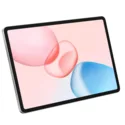判决
在各大厂商的产品线中,很难找到像 Teclast T65 这样经济实惠的 13.4 英寸平板电脑。这么大的屏幕通常是旗舰机型的专利。这也是 T65 的优势所在,尤其是它的售价低于 300 欧元,有些甚至低于 200 欧元。
不过,在要求较高的任务中,甚至在日常使用中,系统也会出现延迟。120 Hz 显示屏让人感觉很流畅,但 SoC 有限的性能往往跟不上节奏。
相对较小的电池、缓慢的充电速度和分辨率不高的显示屏都是你不得不接受的妥协。机身由一整块金属碾压而成,但其稳定性和手感都无法与价格更高的平板电脑相比。
摄像头和扬声器在紧要关头还能派上用场,但在日常使用中就显得力不从心了。
如果你能接受这一点,只是想用尽可能少的钱获得 120 Hz 的超大屏幕,并欣赏它的移动功能,那么 Teclast T65 确实是一款物美价廉的产品。
Pros
Cons
价格和供应情况
译者注:对于美国用户,这款平板电脑在 亚马逊上的售价为 169.99 美元。.
在亚马逊(amazon.de)上,这款平板电脑目前的价格约为 230 欧元。在阿里速卖通(Aliexpress)上,这款平板电脑的价格甚至更便宜,欧盟运费将其价格降至大约 150 欧元。
规格
外壳和功能 - 与 iPad 类似的金属一体成型机身
中国制造商 Teclast T65 为市场带来了一款采用一体式金属外壳的 13.4 英寸平板电脑。深灰色的外观--太空灰--明显是向Apple的 iPad 致敬。
对于这样一款价格低廉的设备来说,它的机身看起来令人印象深刻,手感良好,结构简洁。顶部的细长塑料条改善了天线接收效果。虽然按压时会发出轻微的噼啪声,而且显示屏上很快就会出现压痕,但一切看起来都很清晰。
平板电脑重 720 克,感觉很结实。存储容量为 128 GB,可通过 microSD 扩展,读卡速度与同价位的其他平板电脑相当。
» Notebookcheck多媒体笔记本电脑Top 10排名
» Notebookcheck游戏笔记本电脑Top 10排名
» Notebookcheck低价办公/商务笔记本电脑Top 10排名
» Notebookcheck高端办公/商务笔记本电脑Top 10排名
» Notebookcheck工作站笔记本电脑Top 10排名
» Notebookcheck亚笔记本电脑Top 10排名
» Notebookcheck超级本产品Top 10排名
» Notebookcheck变形本产品Top 10排名
» Notebookcheck平板电脑Top 10排名
» Notebookcheck智能手机Top 10排名
» Notebookcheck评测过最出色的笔记本电脑屏幕
» Notebookcheck售价500欧元以下笔记本电脑Top 10排名
» Notebookcheck售价300欧元以下笔记本电脑Top 10排名
| SD Card Reader - average JPG Copy Test (av. of 3 runs) | |
| Teclast T70 (Angelbird V60) | |
| Xiaomi Redmi Pad Pro (Angelbird V60) | |
| Lenovo Idea Tab Pro (Angelbird V60) | |
| Teclast T65 (Angelbird V60) | |
| Average of class Tablet (10.2 - 57.4, n=51, last 2 years) | |
跨平台磁盘测试 (CPDT)
通信和操作 - 配备 4G 网络的 Teclast 平板电脑
Teclast T65 支持最快的无线标准 Wi-Fi 5。在测试中,它的速度达到了大约 300-350 Mbit/s,对于日常使用来说尚可,不过一些经济型对手的速度明显更快。
不过,在这个价位的平板电脑中,只有少数提供移动网络支持。T65 支持 4G,让您即使在国外旅行也能自由上网。
触摸屏的运行速度高达 120 Hz,响应迅速。不过,由于平板电脑的整体性能有限,时不时会出现延迟。
没有指纹传感器,也不支持面部识别。
| Networking | |
| Teclast T65 | |
| iperf3 transmit AXE11000 | |
| iperf3 receive AXE11000 | |
| Teclast T70 | |
| iperf3 transmit AXE11000 | |
| iperf3 receive AXE11000 | |
| Lenovo Idea Tab Pro | |
| iperf3 transmit AXE11000 | |
| iperf3 receive AXE11000 | |
| iperf3 transmit AXE11000 6GHz | |
| iperf3 receive AXE11000 6GHz | |
| Xiaomi Redmi Pad Pro | |
| iperf3 transmit AXE11000 | |
| iperf3 receive AXE11000 | |
| Honor Pad 10 | |
| iperf3 transmit AXE11000 | |
| iperf3 receive AXE11000 | |
| Average 802.11 a/b/g/n/ac | |
| iperf3 transmit AXE11000 | |
| iperf3 receive AXE11000 | |
| Average of class Tablet | |
| iperf3 transmit AXE11000 | |
| iperf3 receive AXE11000 | |
| iperf3 transmit AXE11000 6GHz | |
| iperf3 receive AXE11000 6GHz | |
软件和可持续性 - 是否有任何更新?
该软件基于Android 15,只做了少量修改。制造商没有明确说明将提供多长时间的更新。在测试时,我们平板电脑上的安全补丁是从 2025 年 8 月开始的,因此仍然是合理的最新版本。
制造商没有提供有关可持续发展的信息或承诺。
相机 - 几乎无法使用
背面有一个相当简单的 1300 万像素摄像头。在光线充足的情况下,它足以扫描文件或拍摄快照,但很难拍出好照片:图像偏蓝,在明亮的地方很快就会变得太亮。
前置摄像头的自拍效果尚可,但细节有限。
Image comparison
Choose a scene and navigate within the first image. One click changes the position on touchscreens. One click on the zoomed-in image opens the original in a new window. The first image shows the scaled photograph of the test device.
Hauptkamera PflanzeHauptkamera UmgebungHauptkamera Low Light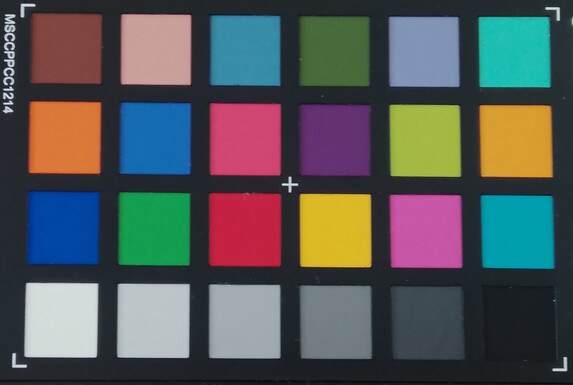

显示屏 - 大屏幕,低分辨率
Teclast T65 的屏幕尺寸为 13.4 英寸,非常大。分辨率为 1,920 x 1,200 像素,看起来相当低,像素密度仅为 169 PPI。这使得画面不时显得有些粗糙。
最大亮度约为 380 cd/m²,在室内足够,但在室外强光下容易产生反光。
色彩总体上比较准确,但在蓝色调方面比较吃力,整体上呈现出淡淡的紫色。
即使在亮度很低的情况下,我们也没有发现 PWM 闪烁。
| |||||||||||||||||||||||||
Brightness Distribution: 91 %
Center on Battery: 379 cd/m²
Contrast: 1354:1 (Black: 0.28 cd/m²)
ΔE ColorChecker Calman: 6.01 | ∀{0.5-29.43 Ø4.78}
ΔE Greyscale Calman: 7 | ∀{0.09-98 Ø5}
77.2% sRGB (Calman 2D)
Gamma: 2.253
CCT: 7361 K
| Teclast T65 IPS, 1920x1200, 13.4" | Teclast T70 IPS, 1920x1200, 14" | Lenovo Idea Tab Pro IPS, 2944x1840, 12.7" | Xiaomi Redmi Pad Pro IPS, 2560x1600, 12.1" | Honor Pad 10 IPS, 2560x1600, 12.1" | |
|---|---|---|---|---|---|
| Screen | 6% | 9% | 20% | 20% | |
| Brightness middle (cd/m²) | 379 | 400 6% | 409 8% | 513 35% | 529 40% |
| Brightness (cd/m²) | 357 | 385 8% | 388 9% | 480 34% | 499 40% |
| Brightness Distribution (%) | 91 | 92 1% | 89 -2% | 86 -5% | 91 0% |
| Black Level * (cd/m²) | 0.28 | 0.36 -29% | 0.4 -43% | 0.4 -43% | 0.5 -79% |
| Contrast (:1) | 1354 | 1111 -18% | 1023 -24% | 1283 -5% | 1058 -22% |
| Colorchecker dE 2000 * | 6.01 | 5.15 14% | 3.46 42% | 2.82 53% | 2 67% |
| Colorchecker dE 2000 max. * | 13.04 | 10.41 20% | 5.46 58% | 8.83 32% | 4.79 63% |
| Greyscale dE 2000 * | 7 | 4 43% | 5.2 26% | 2.9 59% | 3.6 49% |
| Gamma | 2.253 98% | 2.131 103% | 2.106 104% | 2.265 97% | 2.248 98% |
| CCT | 7361 88% | 7235 90% | 5823 112% | 7189 90% | 7398 88% |
* ... smaller is better
Screen Flickering / PWM (Pulse-Width Modulation)
| Screen flickering / PWM not detected | |||
In comparison: 53 % of all tested devices do not use PWM to dim the display. If PWM was detected, an average of 8108 (minimum: 5 - maximum: 343500) Hz was measured. | |||
Display Response Times
| ↔ Response Time Black to White | ||
|---|---|---|
| 25.9 ms ... rise ↗ and fall ↘ combined | ↗ 9.9 ms rise | |
| ↘ 16 ms fall | ||
| The screen shows relatively slow response rates in our tests and may be too slow for gamers. In comparison, all tested devices range from 0.1 (minimum) to 240 (maximum) ms. » 61 % of all devices are better. This means that the measured response time is worse than the average of all tested devices (20.2 ms). | ||
| ↔ Response Time 50% Grey to 80% Grey | ||
| 33.7 ms ... rise ↗ and fall ↘ combined | ↗ 17.5 ms rise | |
| ↘ 16.2 ms fall | ||
| The screen shows slow response rates in our tests and will be unsatisfactory for gamers. In comparison, all tested devices range from 0.165 (minimum) to 636 (maximum) ms. » 45 % of all devices are better. This means that the measured response time is similar to the average of all tested devices (31.6 ms). | ||
性能、排放和电池寿命 - 功率不大,电池较小
Teclast T65 运行于 Unisoc T620SoC 芯片,这款基本的芯片在基准测试中显示出了它的局限性。日常工作大多很流畅,但动画有时会出现卡顿,重度应用几乎无法使用。
内存速度尚可,加载时间和数据传输都在合理范围内,但许多同类平板电脑的内存速度明显更快。
即使在长时间使用过程中,发热量也保持适中,SoC 的节流也很小。
平板电脑配有两个扬声器,位于底部边缘。声音高音很重。遗憾的是,通过蓝牙传输音频只能使用最基本的编解码器。
对于这种尺寸的平板电脑来说,8000 毫安时的电池容量较小。在我们的 Wi-Fi 测试中,它的续航时间为 13 小时 44 分钟,值得尊敬,但一些同价位的竞争对手的续航时间要长得多。
充电时间很长,超过 3 小时,这也是因为最大充电功率只有 10 瓦。
| Geekbench AI | |
| Single Precision NPU 1.5 | |
| Average of class Tablet (166 - 5295, n=28, last 2 years) | |
| Honor Pad 10 | |
| Teclast T65 | |
| Average UNISOC T7280 (T620) (n=1) | |
| Half Precision NPU 1.5 | |
| Average of class Tablet (154 - 41155, n=28, last 2 years) | |
| Honor Pad 10 | |
| Teclast T65 | |
| Average UNISOC T7280 (T620) (n=1) | |
| Quantized NPU 1.5 | |
| Average of class Tablet (88 - 57388, n=28, last 2 years) | |
| Honor Pad 10 | |
| Teclast T65 | |
| Average UNISOC T7280 (T620) (n=1) | |
| Jetstream 2 - 2.0 Total Score | |
| Average of class Tablet (22.3 - 395, n=67, last 2 years) | |
| Lenovo Idea Tab Pro | |
| Xiaomi Redmi Pad Pro | |
| Honor Pad 10 | |
| Teclast T65 | |
| Average UNISOC T7280 (T620) (n=1) | |
| PCMark for Android - Work 3.0 | |
| Lenovo Idea Tab Pro | |
| Honor Pad 10 | |
| Xiaomi Redmi Pad Pro | |
| Average of class Tablet (4622 - 27428, n=77, last 2 years) | |
| Teclast T65 | |
| Average UNISOC T7280 (T620) (n=1) | |
| Teclast T70 | |
| Teclast T65 | Teclast T70 | Lenovo Idea Tab Pro | Xiaomi Redmi Pad Pro | Honor Pad 10 | Average 128 GB UFS 2.2 Flash | Average of class Tablet | |
|---|---|---|---|---|---|---|---|
| AndroBench 3-5 | -6% | 287% | 12% | 116% | -7% | 74% | |
| Sequential Read 256KB (MB/s) | 983 | 975.4 -1% | 3648.3 271% | 844.9 -14% | 1918.12 95% | 736 ? -25% | 1795 ? 83% |
| Sequential Write 256KB (MB/s) | 574 | 505.3 -12% | 3298.5 475% | 705.3 23% | 1632.94 184% | 532 ? -7% | 1342 ? 134% |
| Random Read 4KB (MB/s) | 173 | 165.1 -5% | 474.4 174% | 215.5 25% | 342.88 98% | 193 ? 12% | 246 ? 42% |
| Random Write 4KB (MB/s) | 203 | 195.5 -4% | 668 229% | 231.4 14% | 375.28 85% | 186.3 ? -8% | 280 ? 38% |
(+) The maximum temperature on the upper side is 34.2 °C / 94 F, compared to the average of 33.7 °C / 93 F, ranging from 20.7 to 53.2 °C for the class Tablet.
(+) The bottom heats up to a maximum of 32.6 °C / 91 F, compared to the average of 33.2 °C / 92 F
(+) In idle usage, the average temperature for the upper side is 23.3 °C / 74 F, compared to the device average of 30 °C / 86 F.
3DMark 压力测试
| 3DMark - Wild Life Extreme Stress Test | |
| Honor Pad 10 | |
| Teclast T70 | |
| Xiaomi Redmi Pad Pro | |
| Teclast T65 | |
| Lenovo Idea Tab Pro | |
Teclast T65 audio analysis
(+) | speakers can play relatively loud (82.7 dB)
Bass 100 - 315 Hz
(-) | nearly no bass - on average 22.9% lower than median
(±) | linearity of bass is average (11.8% delta to prev. frequency)
Mids 400 - 2000 Hz
(+) | balanced mids - only 2.4% away from median
(+) | mids are linear (5.9% delta to prev. frequency)
Highs 2 - 16 kHz
(±) | higher highs - on average 5.8% higher than median
(±) | linearity of highs is average (8.4% delta to prev. frequency)
Overall 100 - 16.000 Hz
(±) | linearity of overall sound is average (20.9% difference to median)
Compared to same class
» 62% of all tested devices in this class were better, 6% similar, 32% worse
» The best had a delta of 7%, average was 21%, worst was 129%
Compared to all devices tested
» 56% of all tested devices were better, 8% similar, 36% worse
» The best had a delta of 4%, average was 24%, worst was 134%
Honor Pad 10 audio analysis
(+) | speakers can play relatively loud (89.1 dB)
Bass 100 - 315 Hz
(±) | reduced bass - on average 12% lower than median
(±) | linearity of bass is average (13.4% delta to prev. frequency)
Mids 400 - 2000 Hz
(±) | higher mids - on average 5.6% higher than median
(+) | mids are linear (6.7% delta to prev. frequency)
Highs 2 - 16 kHz
(+) | balanced highs - only 4.3% away from median
(±) | linearity of highs is average (8.3% delta to prev. frequency)
Overall 100 - 16.000 Hz
(+) | overall sound is linear (13.4% difference to median)
Compared to same class
» 25% of all tested devices in this class were better, 5% similar, 70% worse
» The best had a delta of 7%, average was 21%, worst was 129%
Compared to all devices tested
» 13% of all tested devices were better, 4% similar, 83% worse
» The best had a delta of 4%, average was 24%, worst was 134%
| Teclast T65 8000 mAh | Teclast T70 10000 mAh | Lenovo Idea Tab Pro 10200 mAh | Xiaomi Redmi Pad Pro 10000 mAh | Honor Pad 10 10100 mAh | |
|---|---|---|---|---|---|
| Battery runtime | 15% | -3% | 12% | 7% | |
| WiFi v1.3 (h) | 13.7 | 15.7 15% | 13.3 -3% | 15.4 12% | 14.7 7% |
| H.264 (h) | 17.1 | 17 | 17.5 | ||
| Reader / Idle (h) | 25.4 | 37.3 | |||
| Load (h) | 4.3 | 4.1 |
Notebookcheck 总体评分
如果你想以极低的价格购买一款具有移动连接功能的大型平板电脑,那么你应该看看 Teclast T65。
但要注意它的局限性。
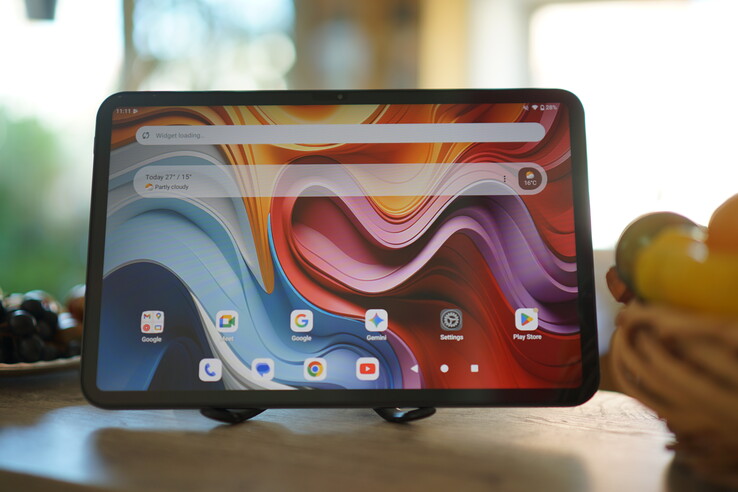
Teclast T65
- 09/20/2025 v8
Florian Schmitt
可比较的替代品
Image | Model / Review | Price | Weight | Drive | Display |
|---|---|---|---|---|---|
| Teclast T65 UNISOC T7280 (T620) ⎘ ARM Mali-G57 MP1 ⎘ 8 GB Memory, 128 GB UFS 2.1 | Amazon: $189.99 List Price: 270€ | 720 g | 128 GB UFS 2.2 Flash | 13.40" 1920x1200 169 PPI IPS | |
| Teclast T70 Mediatek Helio G99 ⎘ ARM Mali-G57 MP2 ⎘ 8 GB Memory, 256 GB UFS 2.1 | Amazon: 1. $21.99 14.1-inch Android Tablet Cas... 2. $19.99 14.1-inch Android Tablet Cas... 3. $17.89 Screen Protector for TECLAST... List Price: 270€ | 960 g | 256 GB UFS 2.2 Flash | 14.00" 1920x1200 162 PPI IPS | |
| Lenovo Idea Tab Pro MediaTek Dimensity 8300 ⎘ ARM Mali-G615 MP6 ⎘ 8 GB Memory, 256 GB | Amazon: 1. $279.99 Lenovo Idea Tab Pro with Goo... 2. $308.00 Lenovo Idea Tab Pro TB373FU ... 3. $56.99 Keyboard Case Touch for Leno... List Price: 379€ | 620 g | 256 GB UFS 4.0 Flash | 12.70" 2944x1840 273 PPI IPS | |
| Xiaomi Redmi Pad Pro Qualcomm Snapdragon 7s Gen 2 ⎘ Qualcomm Adreno 710 ⎘ 6 GB Memory, 128 GB UFS 2.1 | Amazon: $332.40 List Price: 380€ | 571 g | 128 GB UFS 2.2 Flash | 12.10" 2560x1600 249 PPI IPS | |
| Honor Pad 10 Qualcomm Snapdragon 7 Gen 3 ⎘ Qualcomm Adreno 720 ⎘ 8 GB Memory, 256 GB | Amazon: 1. $16.19 Ibywind for Honor Pad 10 Scr... 2. $24.99 Suitable for Honor Pad 10/Ho... 3. $105.24 For Honor pick Xiaolong Zhil... List Price: 300 Euro | 525 g | 256 GB UFS 3.1 Flash | 12.10" 2560x1600 249 PPI IPS |
Transparency
The selection of devices to be reviewed is made by our editorial team. The test sample was freely purchased by the author at his/her own expense. The lender had no influence on this review, nor did the manufacturer receive a copy of this review before publication. There was no obligation to publish this review. As an independent media company, Notebookcheck is not subjected to the authority of manufacturers, retailers or publishers.
This is how Notebookcheck is testing
Every year, Notebookcheck independently reviews hundreds of laptops and smartphones using standardized procedures to ensure that all results are comparable. We have continuously developed our test methods for around 20 years and set industry standards in the process. In our test labs, high-quality measuring equipment is utilized by experienced technicians and editors. These tests involve a multi-stage validation process. Our complex rating system is based on hundreds of well-founded measurements and benchmarks, which maintains objectivity. Further information on our test methods can be found here.




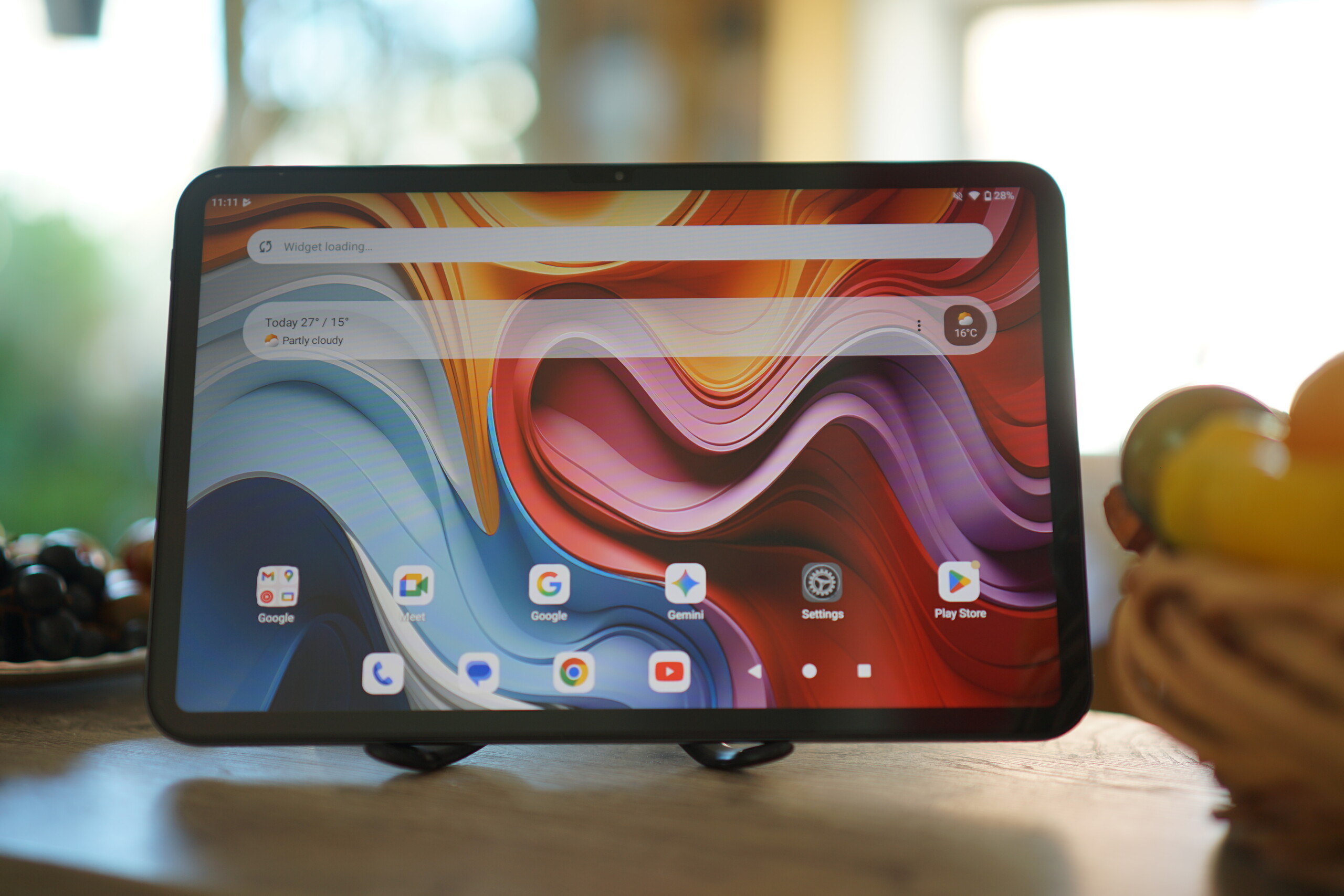

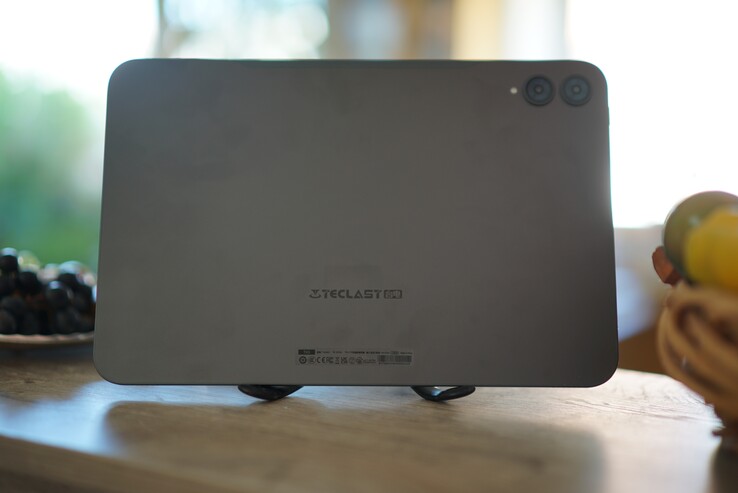



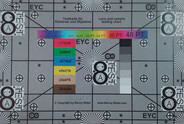



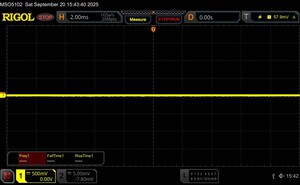
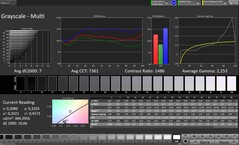
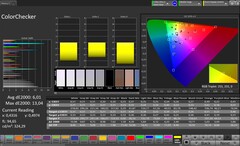
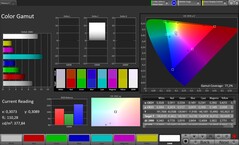

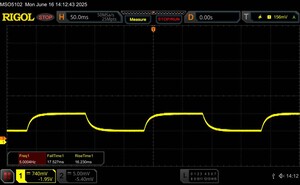
 Total Sustainability Score:
Total Sustainability Score: 



